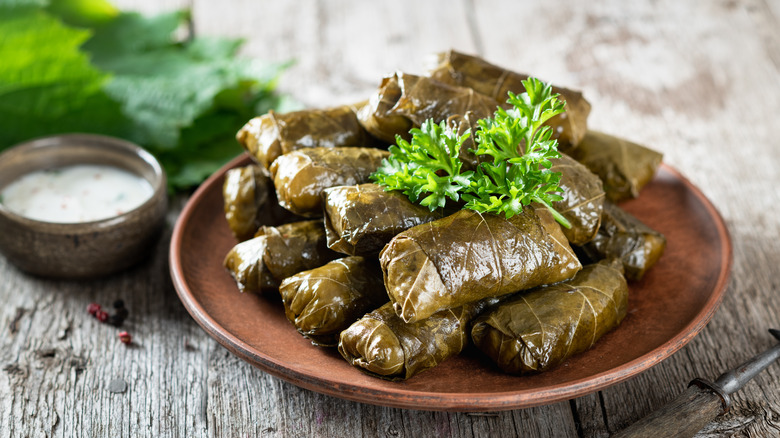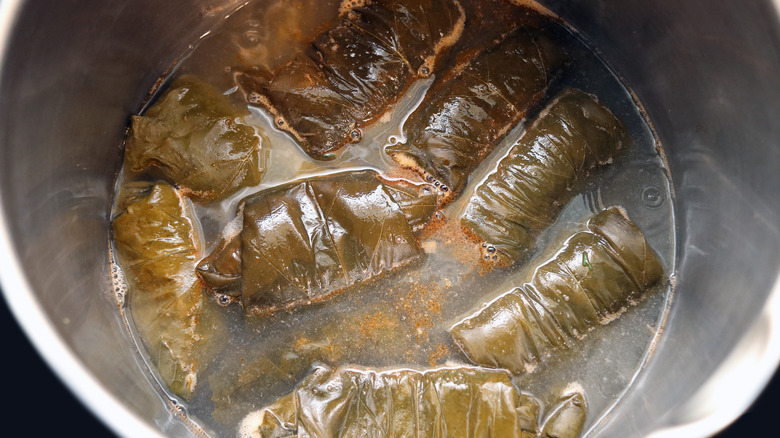The Best Method For Cooking Stuffed Grape Leaves
Found in Greek taverns and as a mezze across the Middle East, dolma is a delightfully tangy start to a meal. When you see these dark green grape leaf wraps, you know you're in for a burst of flavor. From a preserved, brined, or fresh form, the large greens wrap around a range of fillings, which include rice, herbs, spices, meats, and more.
It's a terrific vessel for many aromatic foods, which can often be assembled with ease. As a result, you should keep stuffed grape leaves in your pantry, and start experimenting with them at home — there are many cooking methods to discover. And while relatively easy to work with, there are a few tips and tricks to keep in mind. Especially when stuffing leaves, you'll want to prevent accidental breakage, which will lead to a disappointingly mushy result.
The best method to ensure a tight seal is to first stuff the leaves with the veins facing up. Remove the stem, then place just under a tablespoon of filling, before tightly folding over the sides, and then rolling. Most critically, arrange them in the cooking vessel with the opening touching the bottom of the pan. Add a moderate amount of water to cover, but do not submerge the wraps, and place a plate on top to apply some gentle pressure. With such gentle care, the dolmas will turn out delicious after around 30 to 45 minutes of simmering time.
More cooking tips for dolma
While such a method generally ensures a batch won't fall apart, there are more details to consider. Depending on the way the grape leaf was preserved, you'll want to prepare the vessel for filling in a slightly different fashion. If you're lucky to have fresh grape leaves on hand — which have a punchier flavor — you'll need to blanch them first to increase malleability. The guide to canned dolma is a bit different. Whenever the leaves are stored in some sort of preservative liquid, you'll want to thoroughly rinse before use, although a short blanch won't hurt either. Before stuffing, make sure to drain any excess water, and perhaps even pat dry with a paper towel. Keeping an eye on moisture is critical, as it ensures the simmering process goes smoothly, and the filling won't break.
With such considerations out of the way, the doors open to a wide range of flavor possibilities — dolma melds well with many ingredients. Throw in some Mediterranean orzo or perhaps some lamb, beef, or even fish. Additional flavor can also be imbued by utilizing a flavorful broth rather than water, and don't forget a topping like yogurt or herbs. Once you've mastered the cooking method, an unlimited array of renditions is at your fingertips.

